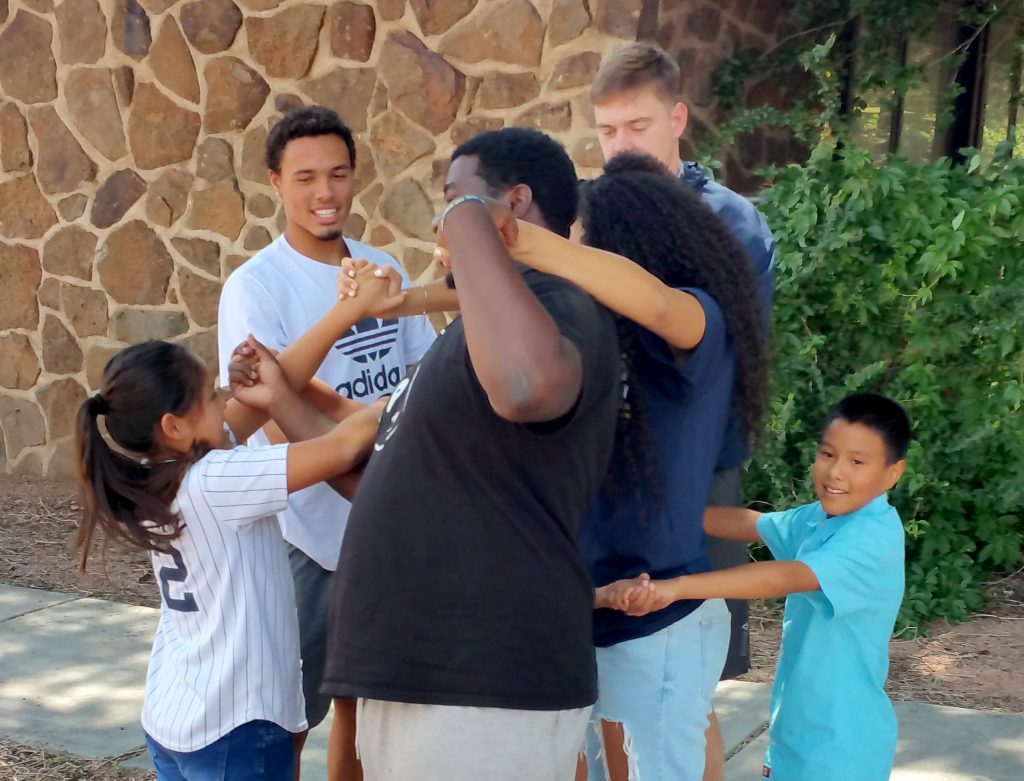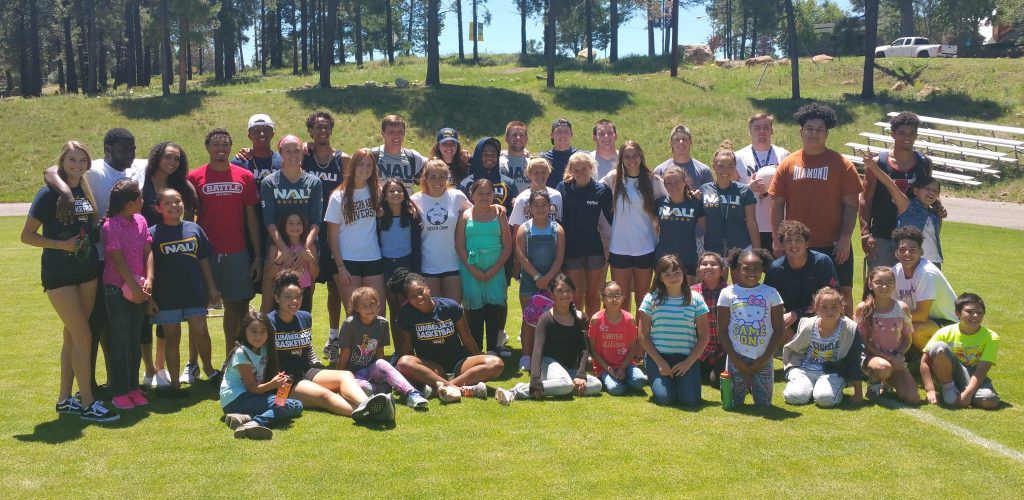By Carly Banks
NAU Communications
What do Killip Elementary students and Northern Arizona University athletes have in common? Dance battles.
And not just any kind of dance battle—an educational one.
These, along with a variety of other unconventional learning methods like mummy wrapping (pictured below) and human knots (pictured left), were the brainchildren of the first-year student-athletes enrolled in the summer session of NAU199—a class designed to help student-athletes succeed in school and in their sport.
Buck Blankenship instructs the course. He, along with several other faculty and staff in student-athlete development, and Jacob Dolence, who runs the newly opened Boundaryless Lab at NAU, came up with the idea of partnering with Killip Elementary School as a way for student-athletes to put what they’ve learned in the classroom into real-life situations.
“We wanted to create a course where student-athletes would ask questions like, ‘who am I as a person?’ and ‘what do I want from this college experience?’” Blankenship said. “The resulting project utilized design principles from Designing Your Life, the chosen text for the course and the current NAU Reads book, where student-athletes would identify a problem that students at Killip might have, develop a solution and execute a designed plan—all while developing empathy by basing it in the community.”
The problem, for example, could be that the time school ends to dinner time is critical for children with lack of opportunity, as many may use that time to play video games or watch TV instead of doing homework, playing outside or participating in group activities. The solution could be coming up with ways to use free time more effectively. Then, the student-athletes would design a plan on how to solve this problem, which might include encouraging students to read a book, learn a new skill or play some of the aforementioned educational games.

Soccer player Makanna Yarnell-Williams said she enjoyed getting out in the community and that the class served as a learning experience for everyone involved.
“It was important to me because it allowed me to understand how to teach and understand diverse types of people,” she said. “I hope the kids can understand that everyone can be a good person, and everyone can go to college if they find the right resources and work hard.”
From group discussions and sharing stories about their lives to skits on how to prevent bullying and games that taught the importance of teamwork, NAU student-athletes spent two days forming friendships and mentoring the fifth-grade students, with the hope that the students would learn solutions to problems they may be facing at home.
In addition to engaging with the students, the athletes met with student leaders from Killip to develop skills they could take back with them to their school and implement in their classrooms.
“In this way, there was knowledge sharing and discussion on how to use this knowledge in the future,” Blankenship said. “The student-athletes inherently knew that having fun while learning was important to keep the students engaged and interested. It was great to see what teaching styles they came up with, and as a professional educator I learned a few techniques!”
For many of the student athletes involved, leaning how to teach caused a significant shift in their mindset and outlook on life—many getting a lot more out of this course than what they bargained for.
“The student-athletes stand out wherever they are, and when they showed up at the school, the Killip students looked up to them immediately,” Blankenship said. “This flipped the mentor/mentee relationship, where many of the student-athletes are coached and have been the mentee in many instances. By traveling to Sunnyside and seeing the impact they had on the students, I think a lot of the athletes realized how powerful this was.”
“I feel empowered knowing these kids look up to me,” Yarnell-Williams said. “I want to exceed their expectations at all times, both on the soccer field as well as in my everyday life. Thinking of those little kids when I want to give up keeps me going strong.”




